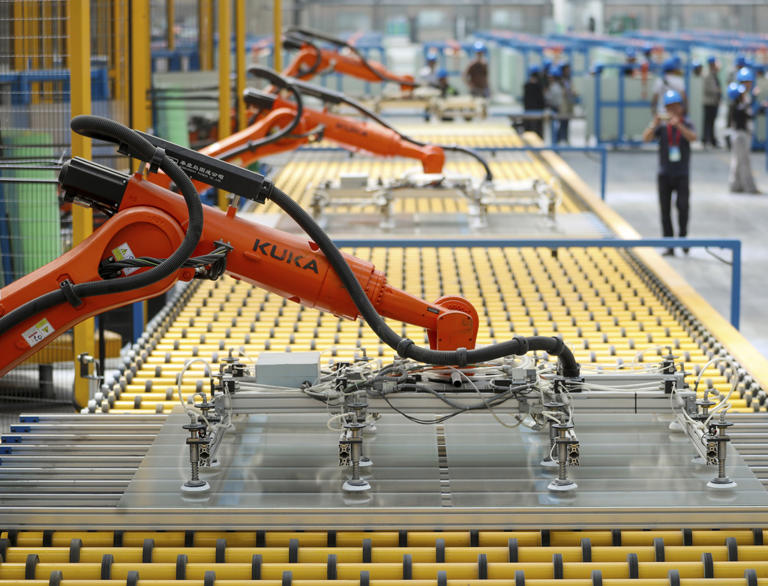In May, China witnessed a noticeable deceleration in factory activity, adding to the mounting pressure on an economy already grappling with the protracted crisis in its property sector. This development was underscored by an official survey released by the China Federation of Logistics and Purchasing, which revealed a drop in the manufacturing Purchasing Managers’ Index (PMI) to 49.5 from April’s 50.4. This decline pushed the index below the crucial 50-point threshold, indicating a contraction in manufacturing activity.
The primary driver behind this slowdown was the decrease in output, coupled with weaker new orders and export orders, highlighting subdued demand dynamics. Analysts had initially anticipated a PMI reading slightly above 50, indicating continued expansion, especially after China’s economy outperformed expectations by growing at a brisk annual pace of 5.3% in the first quarter of the year. However, uncertainties surrounding access to the U.S. market, exacerbated by divergent policy stances between Presidents Joe Biden and Donald Trump, have weighed on sentiment and economic activity.
The subdued sentiment surrounding new orders and export orders may partly reflect concerns over potential tariffs proposed by the Biden administration. In response, China has implemented measures to stabilize its housing market, including easing down-payment requirements and reducing minimum interest rates on certain home loans. However, these efforts have yet to yield significant improvements, as construction activity has continued to slow, exacerbating the prolonged downturn in the property sector.
The downturn in the property market is particularly concerning for Chinese households, as they typically hold a significant portion of their wealth in real estate. This, combined with pandemic-induced job losses and tighter controls on technology-related businesses, has contributed to a decline in consumer spending.
Despite these challenges, the International Monetary Fund (IMF) recently upgraded its forecast for China’s economic growth to 5% for the year. However, the IMF cautioned that more substantial reforms are needed to shift the economy away from its heavy reliance on exports and investment in construction, especially as the population ages.
Many economists advocate for longer-term structural reforms aimed at bolstering consumer confidence and fostering sustainable, long-term growth. While fiscal support measures and potential property stimulus may offer temporary relief, they may not be sufficient to address the underlying structural challenges facing the Chinese economy.
In conclusion, the slowdown in factory activity underscores the urgent need for comprehensive reforms to address the multifaceted challenges confronting China’s economy. Policymakers must navigate these complexities while fostering a more balanced and resilient growth trajectory, one that is less reliant on external factors and investment-driven growth.
